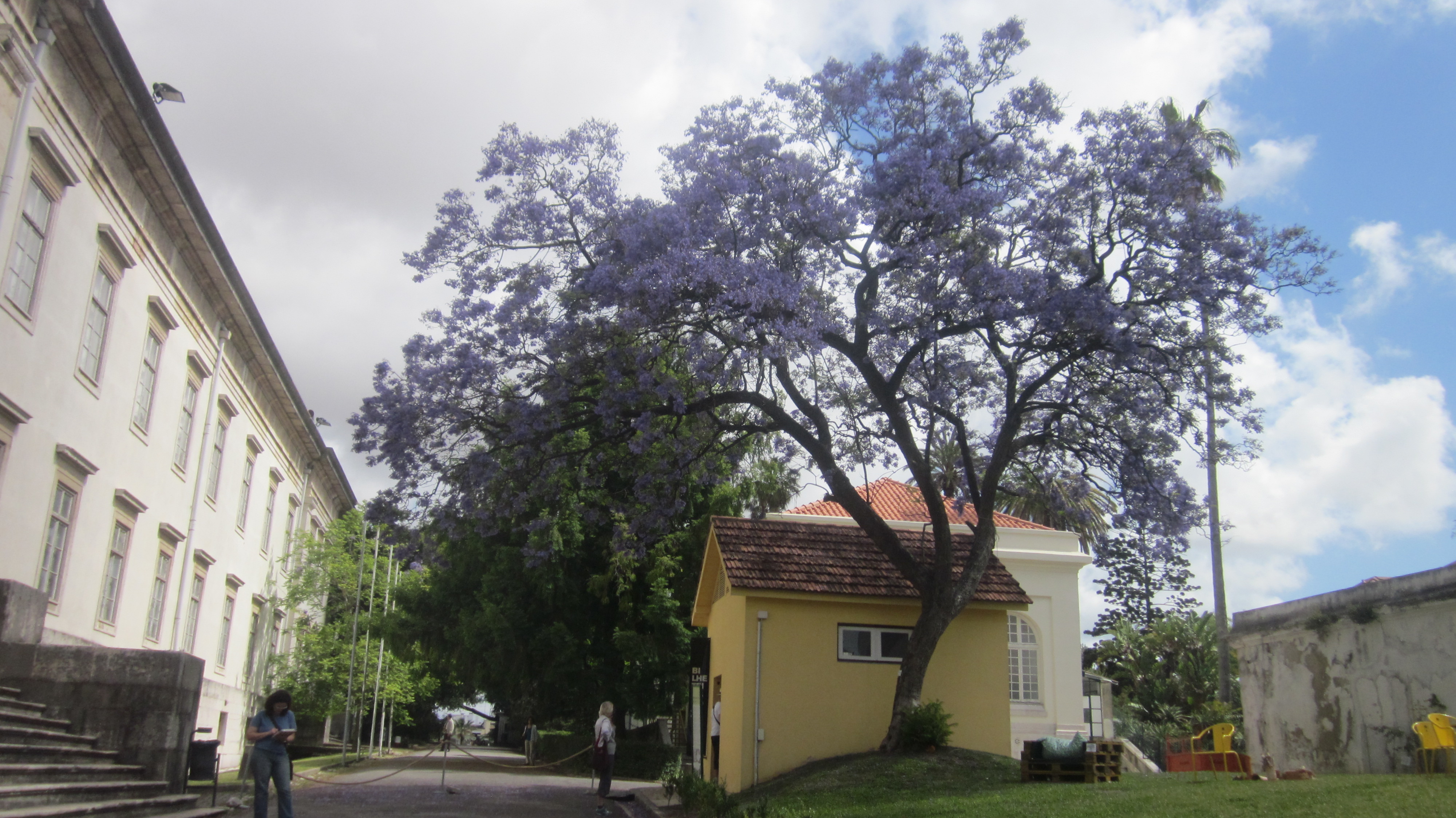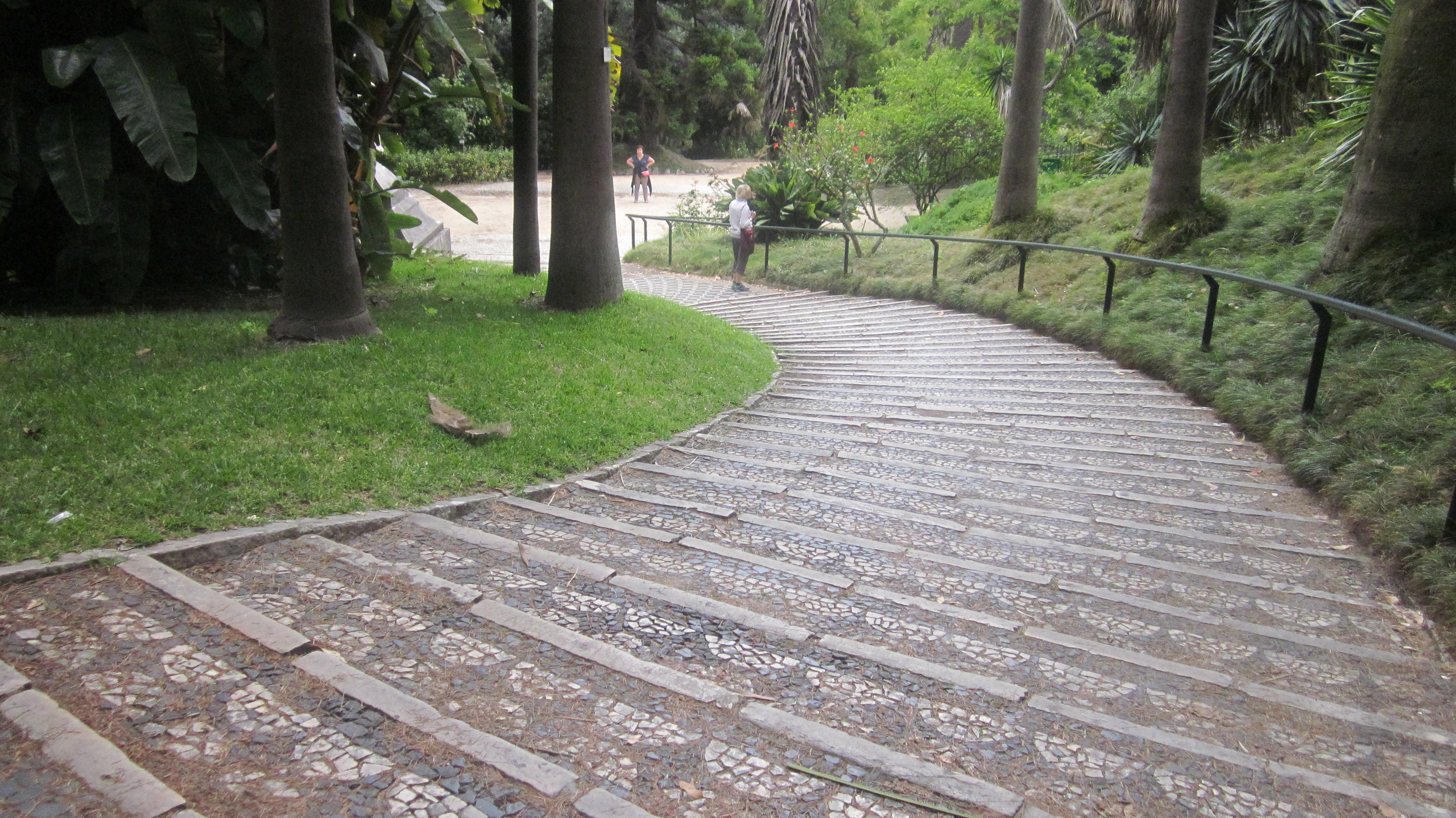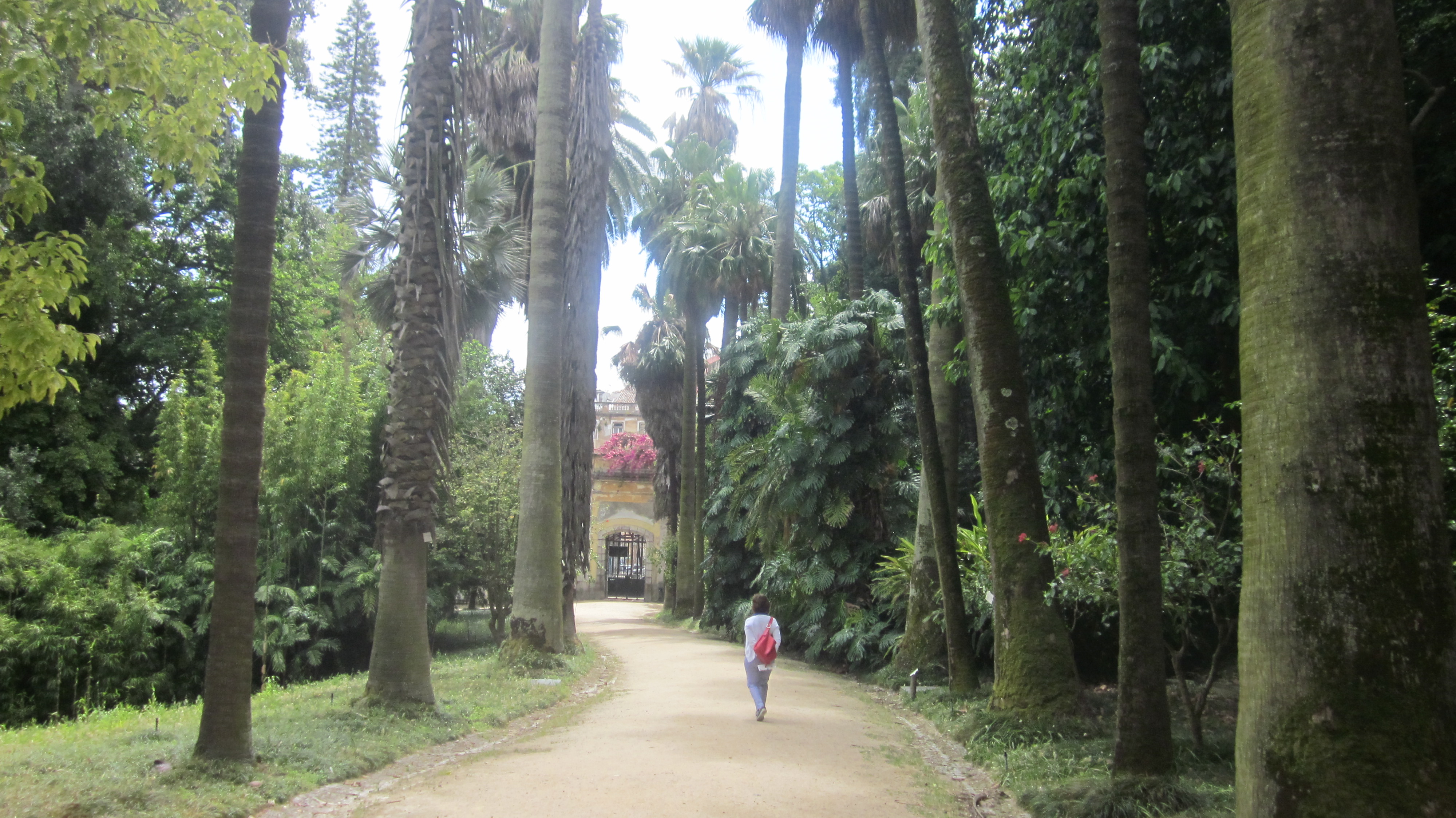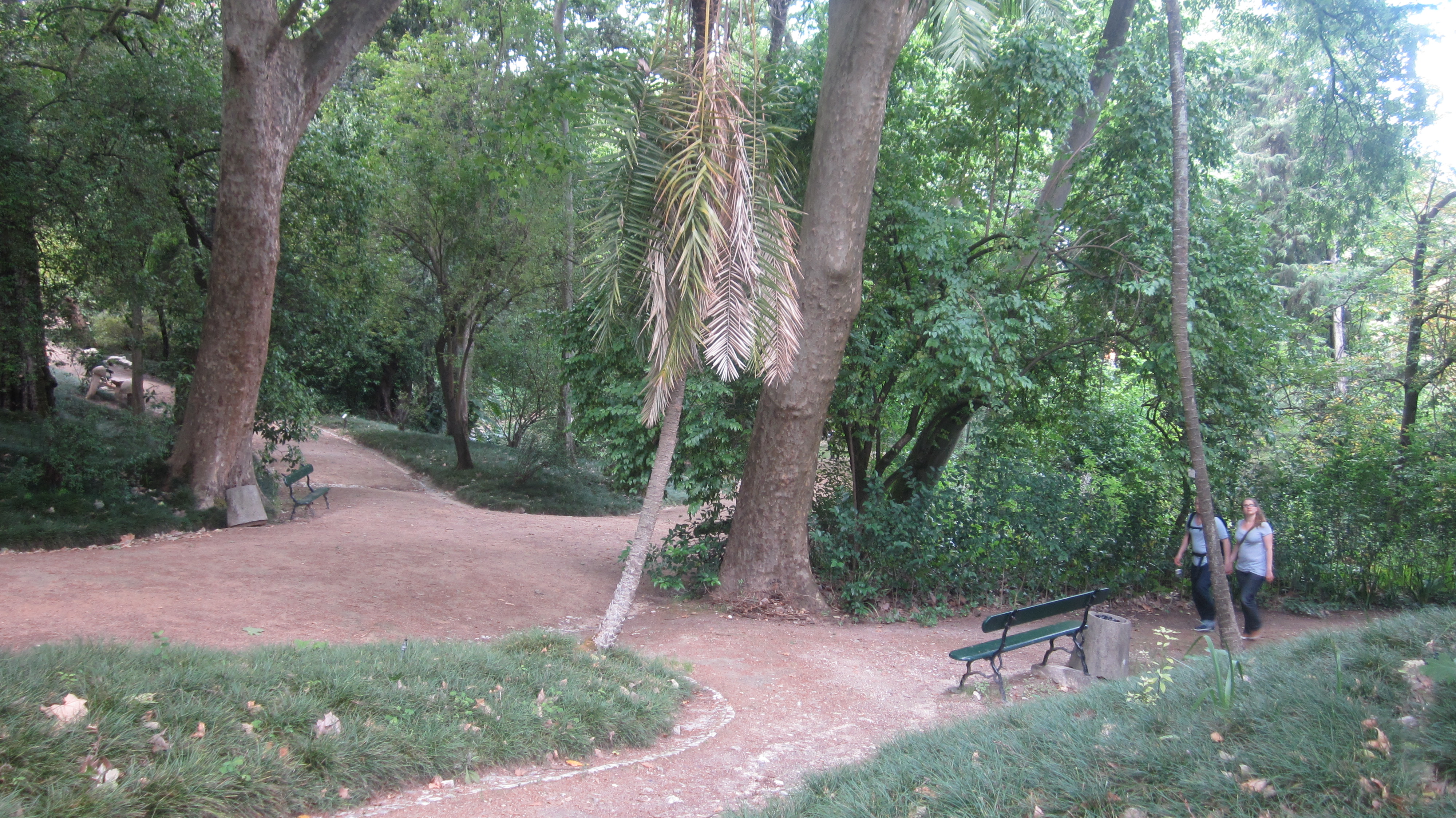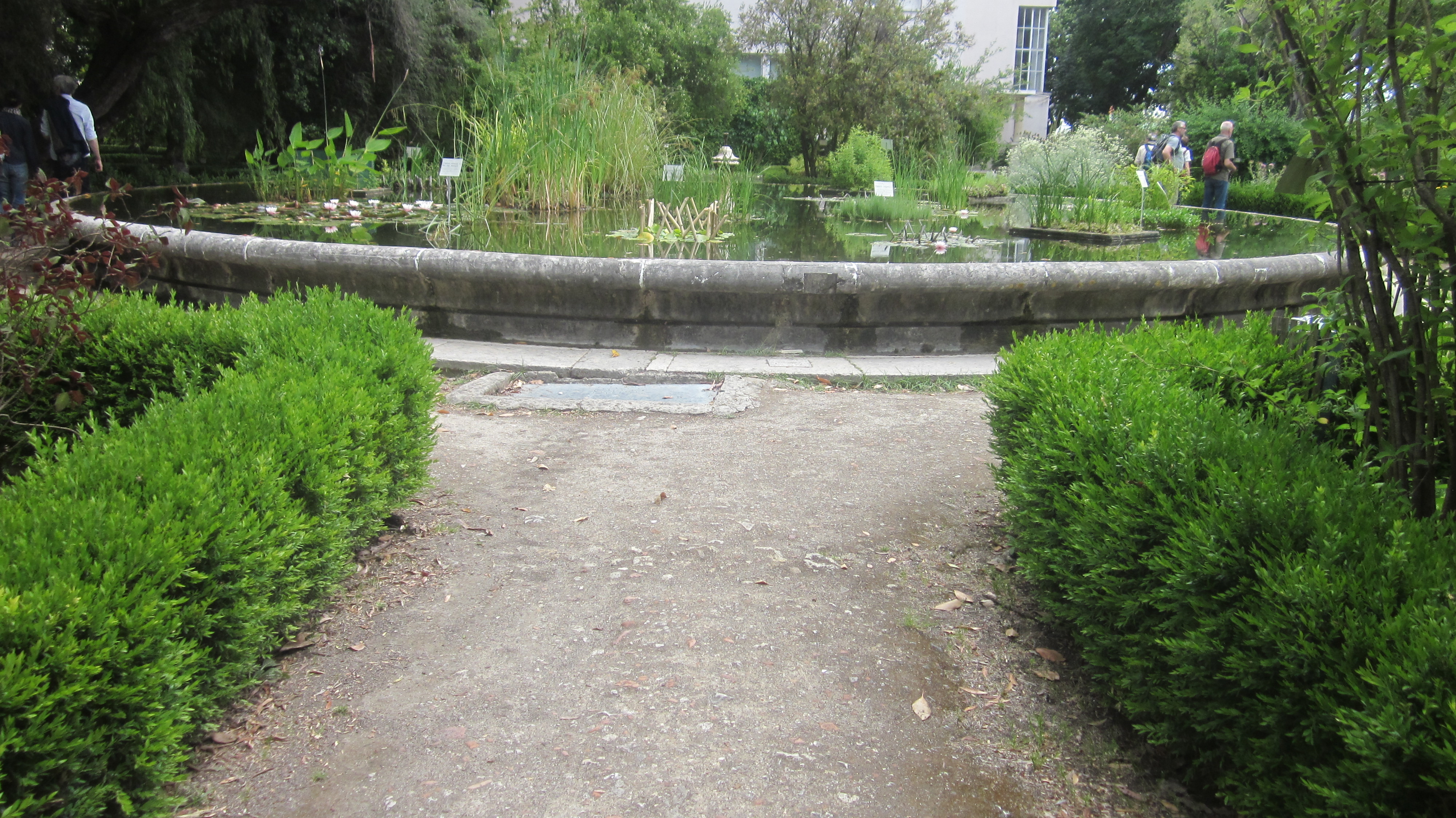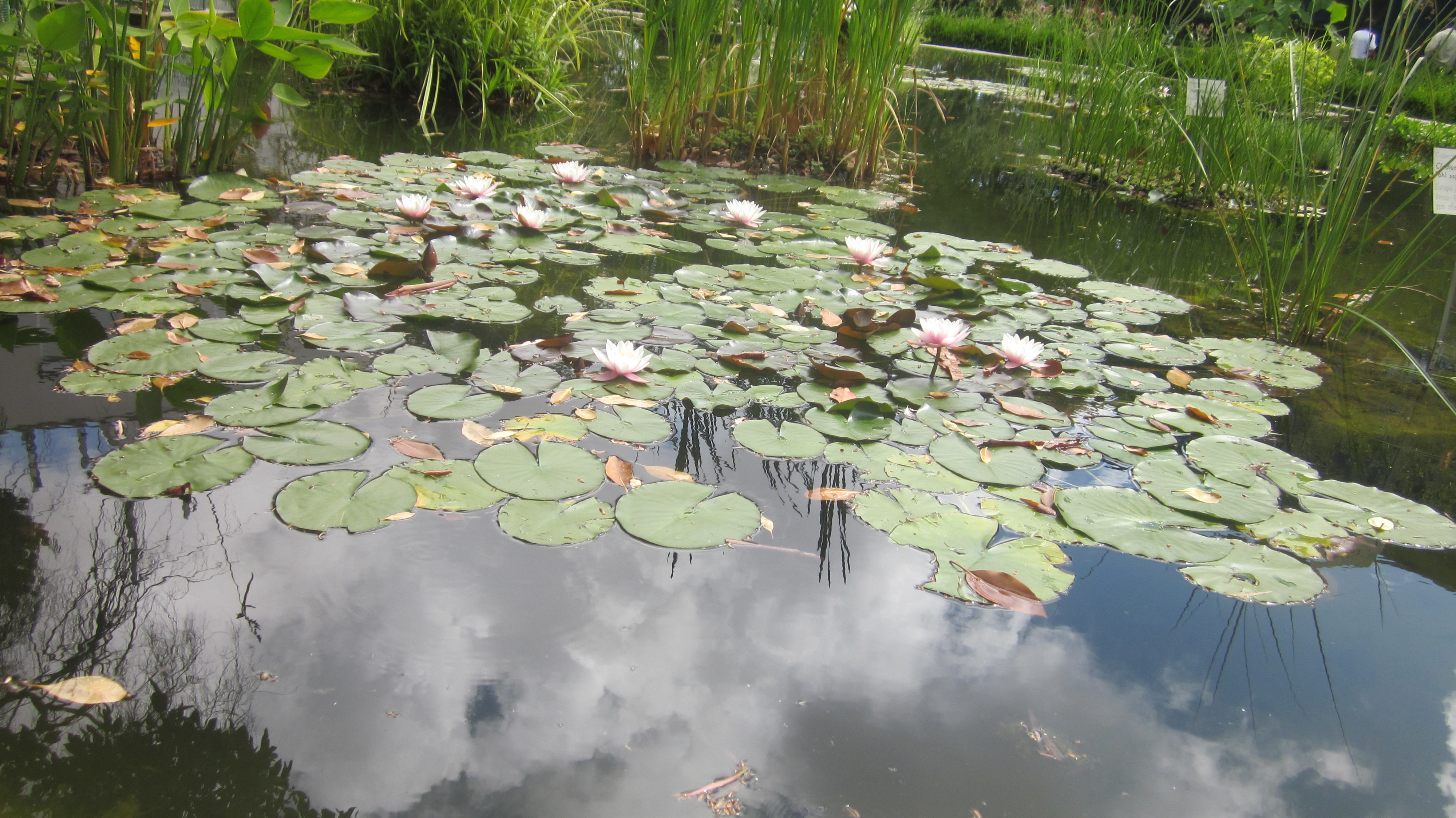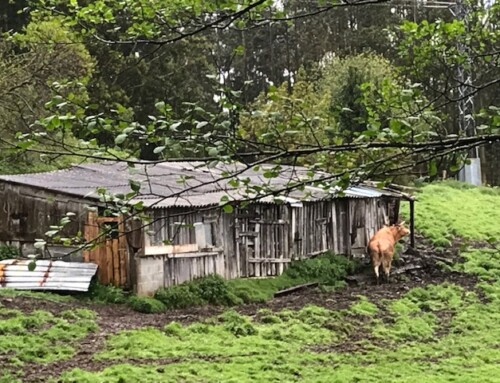Moving uphill moved us closer to other interesting sites. Behind us there is a graceful set of steps but unlike the Spanish steps in Rome which are wide and go straight, these are more narrow and like Portuguese streets, they wind. Instead of lovers freely holding hands as on the Spanish steps, people of all sorts hold free glasses of wine.
At the top of these steps and to the side are Lisboa’s Botanic Gardens and some things for me make it uniquely Lisboan. It is quite grand with large trees forming imposing boundaries to an extensive network of paths, and these paths wind continuously in a maze down into distant corners and snake up into a grand path culminating in a botanical roundabout and a set of designer cobblestoned stairs. The lovers are here, on the deftly placed seats, and holding hands.
The other highlights for me were lotus flowers in a stone walled circular pond; a one of a kind in the world Gingko tree (a powerful herbal remedy); a huge 15 metre Magnolia tree; a sacred Yew tree and the majestic pathway of a variety of Palms.
The famous Portuguese poet, Camoes, called Portugal ‘a garden growing by the sea’ and while there was little colour, a garden is made up of many components, and the ones here would be part of my perfect patch

